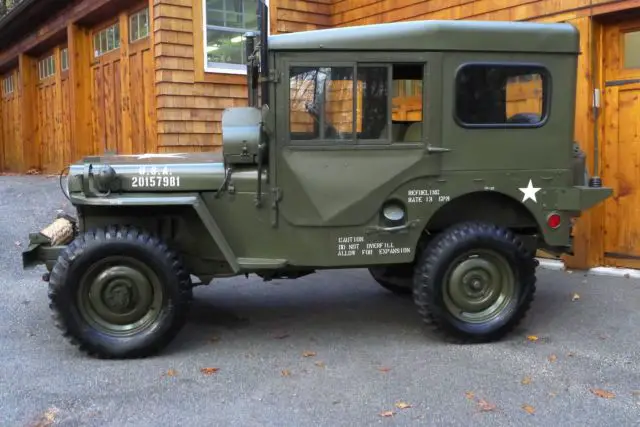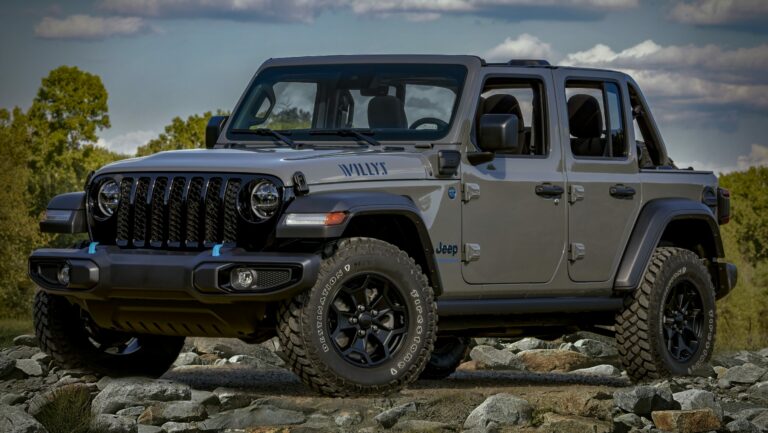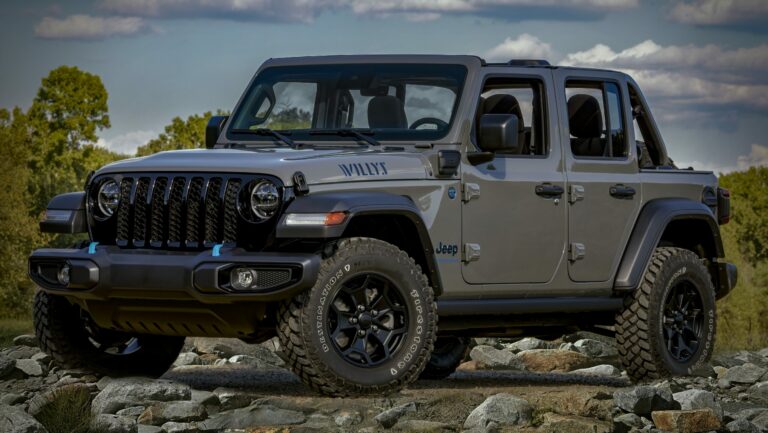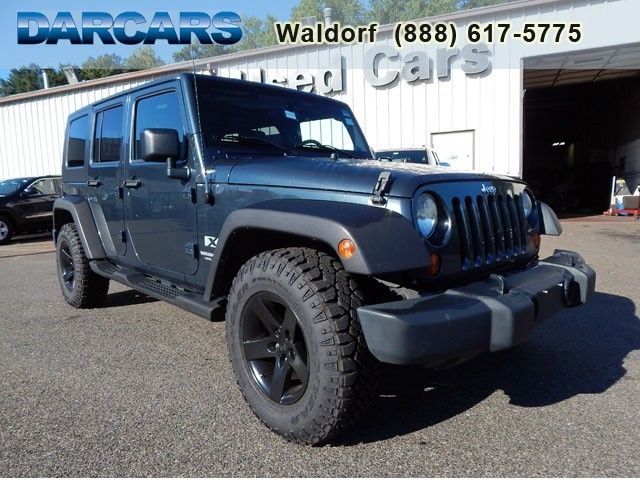M38 Jeep For Sale: A Comprehensive Guide to Owning a Piece of Military History
M38 Jeep For Sale: A Comprehensive Guide to Owning a Piece of Military History /jeeps.truckstrend.com
The rumble of a vintage engine, the iconic silhouette against a rugged landscape, the undeniable sense of adventure – for many enthusiasts, the M38 Jeep embodies the very spirit of utilitarian design and wartime resilience. More than just a vehicle, the M38 is a tangible link to a pivotal era in global history, serving as the workhorse for American forces during the Korean War and beyond. If you’re considering an "M38 Jeep for sale," you’re not just looking for transportation; you’re seeking a project, a passion, and a storied piece of military heritage. This comprehensive guide will navigate the intricacies of finding, evaluating, purchasing, and owning one of these legendary machines.
The M38 Jeep: A Brief History and Legacy
M38 Jeep For Sale: A Comprehensive Guide to Owning a Piece of Military History
Following the unparalleled success of the Willys MB and Ford GPW during World War II, the U.S. military sought to upgrade its general-purpose vehicle fleet. The result was the Willys M38, officially designated the Willys MC. Introduced in 1950, the M38 was a significant evolution, designed to meet more stringent post-war military specifications, particularly for amphibious operations and improved reliability in harsh conditions.
Key improvements over its WWII predecessors included a robust 24-volt electrical system (essential for powering radios and other specialized equipment, and for reliable cold-weather starting), a fully waterproofed ignition system, a stronger frame, and a deeper fording capability (up to 60 inches with a snorkel kit). It retained the beloved and incredibly durable Willys L-134 "Go-Devil" engine, known for its simplicity and reliability. Production of the M38 ceased in 1952, making way for its successor, the M38A1, which featured a new, rounder body style and the more powerful F-head engine. Despite its relatively short production run, the M38 carved out its own niche in military history, serving valiantly in the Korean War and continuing in various roles well into the 1960s. Today, it stands as a testament to American engineering and a highly sought-after collector’s item.
Why Buy an M38 Jeep?
The allure of an M38 Jeep extends far beyond its historical significance. For many, owning one is a deeply rewarding experience driven by a variety of factors:
- Collector’s Item and Historical Preservation: The M38 is a genuine artifact of the Cold War era, representing a crucial bridge between WWII and later military vehicle designs. For history buffs, it’s a chance to preserve a piece of the past.
- Unrivaled Off-Road Prowess: Despite its age, the M38 remains an incredibly capable off-road vehicle. Its compact size, high ground clearance, robust four-wheel-drive system, and simple mechanics make it a formidable machine on trails, mud, or rocky terrain.
- Rewarding Restoration Project: For those with mechanical inclinations, an M38 offers a fulfilling restoration challenge. Its relatively simple design means that much of the work can be done by a dedicated amateur, and the satisfaction of bringing a piece of history back to life is immense.
- Investment Potential: While not a guaranteed appreciating asset like some classic cars, well-restored or original M38s tend to hold their value, and in many cases, appreciate steadily over time, especially as fewer original examples remain.
- Community and Camaraderie: Owning an M38 connects you to a vibrant community of military vehicle enthusiasts, restorers, and collectors. This network provides invaluable support, shared knowledge, and opportunities to participate in shows, parades, and historical reenactments.
- Unique Driving Experience: Driving an M38 is unlike driving any modern vehicle. It’s raw, mechanical, and requires active engagement. This unfiltered connection to the road (or lack thereof) is precisely what appeals to purists.

What to Look For When Buying an M38 Jeep

Acquiring an M38 Jeep requires careful consideration and a keen eye. These vehicles are decades old, and their condition can vary wildly. Here’s a detailed guide on what to inspect:
Condition is Key: The Four Pillars
- Body and Frame (Rust, Rust, Rust): This is paramount. M38s are notorious for rust, especially in the floorboards, hat channels (the structural supports under the floor), battery box, front fenders, and the frame rails.
- Frame: Inspect the entire frame for cracks, excessive pitting, or amateur welding repairs. Pay close attention to areas around spring hangers and crossmembers.
- Body: Check for rust perforation, especially in the driver and passenger floor pans, under the seats, and in the rear cargo area. Look for signs of bondo or poor patch jobs. Originality of the body tub is a major plus.
- Windshield Frame: Often prone to rust.

- Engine (Willys L-134 "Go-Devil"): This legendary 4-cylinder engine is robust but not indestructible.
- Starting: Does it start easily? Listen for unusual noises (knocking, ticking).
- Leaks: Check for oil, coolant, or fuel leaks.
- Smoke: Blue smoke indicates oil burning; white smoke could be coolant.
- Compression: A compression test is ideal to assess engine health.
- Overheating: Check radiator condition and coolant level.
- Drivetrain (Transmission, Transfer Case, Axles):
- Transmission (T-90): Shift through all gears (including reverse) with the engine off and on. Listen for grinding, particularly in 2nd gear. Check for excessive play in the shifter.
- Transfer Case (Dana 18): Engage 4WD high and low range. Check for proper engagement and disengagement. Look for leaks.
- Axles (Dana 25 front, Dana 44 rear): Check for excessive play in the universal joints (U-joints) and axle shafts. Listen for whining or clunking noises during a test drive. Look for fluid leaks at the differentials.
- Electrical System (24-Volt Specifics): The 24V system is a defining feature of the M38.
- Battery: Often two 12V batteries in series. Check terminals and battery box condition.
- Wiring: Look for frayed, cracked, or exposed wires. Non-original wiring is a red flag unless professionally done.
- Components: Test all lights, gauges, horn, and the starter. Ensure the generator is charging properly (voltmeter reading around 28V when running). Many components are 24V specific, making replacements potentially pricier.
- Other Crucial Checks:
- Brakes: Test brakes for pulling, fading, or spongy pedal. Inspect brake lines, master cylinder, and wheel cylinders for leaks. Drum brakes are standard.
- Suspension: Check leaf springs for broken leaves, shackles for wear, and shocks for leaks. Bounce each corner to test damping.
- Steering: Check for excessive play in the steering wheel. Inspect tie rods, drag link, and steering box for looseness or leaks.
- Originality: If authenticity is important, look for original military markings, data plates, and period-correct components. Many M38s have been modified over the years.
Documentation and Where to Buy
- Always ensure the vehicle has a clear, transferable title. Without one, registration can be a nightmare.
- Service Records: While rare for such old military vehicles, any historical documentation adds value.
- Where to Look:
- Online Marketplaces: eBay, Craigslist, Facebook Marketplace (be wary of scams).
- Specialized Forums & Websites: G503.com (military vehicle forum), SteelSoldiers.com, Hemmings.com. These often have dedicated classified sections.
- Classic Car Dealers/Auctions: Can offer more vetted vehicles but often at a premium.
- Military Vehicle Shows: A great place to see multiple examples and talk to owners.
Pre-Purchase Inspection
Unless you are an experienced mechanic specializing in vintage military vehicles, always arrange for a pre-purchase inspection by a qualified professional. This small investment can save you thousands in unexpected repairs.
Understanding M38 Jeep Pricing
The price of an M38 Jeep for sale varies significantly based on its condition, originality, and the seller’s motivation. Here’s a general breakdown:
| Condition Category | Price Range (USD) | Key Characteristics | Notes The M38 is a legendary military jeep that represents an era of unparalleled simplicity and rugged utility. If you’re looking for an M38 Jeep for sale, you’re not just looking for a vehicle; you’re seeking a piece of history, an iconic off-road machine, and a rewarding project that offers a unique connection to the past.
This comprehensive guide is designed to equip you with all the knowledge needed to confidently navigate the market for an M38 Jeep. From understanding its historical significance to identifying key inspection points, pricing expectations, and the joys and challenges of ownership, we’ll cover everything to help you make an informed decision.
The M38 Jeep: A Legacy Forged in Conflict
Born from the need for a more robust and advanced military utility vehicle than its World War II predecessors (the Willys MB and Ford GPW), the Willys M38 (officially designated Willys MC) emerged in 1950. Its primary purpose was to serve the United States military during the Korean War and beyond, incorporating lessons learned from extensive wartime experience.
While retaining the familiar, iconic silhouette and the incredibly durable Willys L-134 "Go-Devil" flathead four-cylinder engine, the M38 introduced several crucial upgrades that set it apart:
- 24-Volt Electrical System: This was a significant advancement, crucial for powering the increasing array of military electronics, communication equipment, and for more reliable cold-weather starting. It required two 12-volt batteries wired in series.
- Waterproofed Ignition System: Designed for deeper fording capabilities, the M38 featured a sealed ignition system, allowing it to traverse streams and flooded terrain more effectively.
- Stronger Frame: The chassis was reinforced to handle heavier loads and more demanding operational conditions.
- Improved Suspension: Minor tweaks enhanced its off-road performance and durability.
- Deeper Fording: With factory-fitted provisions for a snorkel kit, the M38 could ford water up to 60 inches deep, a substantial improvement over the MB/GPW.
- Larger Tires and Fenders: To accommodate the larger tires (7.00×16 vs. 6.00×16), the fenders were slightly modified.
Production of the M38 was relatively short, concluding in 1952 when it was succeeded by the M38A1, which sported a rounder body style and the more powerful Willys F-head engine. Despite its brief production run, the M38 served valiantly, becoming an indispensable asset in the Korean War and seeing continued service in various roles for decades, even adopted by some allied nations. Today, its rugged simplicity, historical context, and undeniable charm make it a highly desirable vehicle for collectors, off-roaders, and history enthusiasts alike.
Why An M38 Jeep Is More Than Just A Vehicle
The decision to seek an M38 Jeep for sale often stems from a deeper appreciation for its unique qualities and the experiences it offers:
- A Tangible Link to History: Owning an M38 means holding a piece of the Cold War era in your garage. It’s a connection to the soldiers who drove them and the critical missions they undertook. For many, this historical significance is the primary draw.
- Unmatched Off-Road Capability (for its era): The M38’s design prioritizes ruggedness and maneuverability. Its short wheelbase, high ground clearance, and robust 4×4 system make it surprisingly capable on challenging terrain. It’s a pure, unadulterated off-road experience.
- Rewarding Restoration and Maintenance: For those with a passion for mechanical work, the M38 is a fantastic project. Its simple, accessible mechanics make it relatively easy to work on, and the satisfaction of bringing a vintage vehicle back to its former glory is immense.
- Growing Investment Potential: While not a speculative asset, well-maintained, original, or professionally restored M38s have demonstrated a steady appreciation in value. As fewer original examples survive, their desirability among collectors continues to grow.
- Vibrant Community and Events: The military vehicle collecting hobby boasts a passionate and supportive community. Owners regularly gather at shows, parades, and reenactments, sharing knowledge, parts, and camaraderie.
- The "Pure Driving" Experience: Driving an M38 is a visceral experience. No power steering, no power brakes, minimal sound deadening. It demands your full attention and rewards you with a direct, unfiltered connection to the road and the machine. It’s a true driver’s vehicle.
What to Look For When Buying an M38 Jeep: A Buyer’s Checklist
Finding the right M38 Jeep for sale requires a meticulous approach. Given their age and intended rugged use, condition varies wildly. Here’s a detailed guide to help you assess potential purchases:
The Critical Inspection Points
- Rust and Body Integrity: This is often the most significant and costly issue.
- Frame: Thoroughly inspect the entire frame for rust, cracks, bends, or amateur welding repairs. Pay close attention to spring hanger areas, crossmembers, and the rear pintle hook mounting.
- Body Tub: The M38’s body tub is prone to rust, especially in the floorboards (driver, passenger, rear cargo), hat channels (the structural supports under the floor), battery box, toolboxes, and fender wells. Look for bubbling paint, soft spots, and poor patch jobs using bondo or thin metal. Originality of the tub (matching numbers if possible) adds significant value.
- Windshield Frame: Prone to rust, especially at the base where it meets the cowl.
- **Engine (Willys L-13






